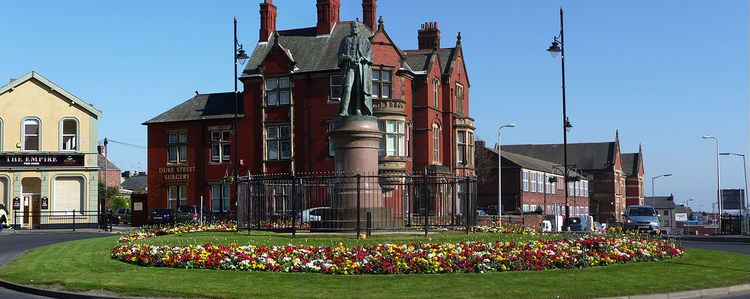Name Henry Schneider | ||
 | ||
Stephen Schneider on Climate Change
Henry William Schneider (12 May 1817 – 11 November 1887) was a British industrialist, and politician, who played a leading role in the development of the new town of Barrow-in-Furness.
Contents
- Stephen Schneider on Climate Change
- Henry Tang piano 2018 Henry Schneider Young Virtuosos Concert
- Brief biography
- References
Henry Tang, piano - 2018 Henry Schneider Young Virtuosos Concert
Brief biography
Henry Schneider arrived in Barrow-in-Furness in 1839 as a speculator and dealer in iron. He took over the Whiteriggs iron mine and other ore deposits. His breakthrough in Furness was the discovery of the massive Burlington iron ore mine near Askam in 1851.
He and other investors including James Ramsden founded the Furness Railway, the first section of which opened in 1846. He decided to build furnaces in the town, in partnership with John Hannay. Schneider's iron company later merged with one founded by Ramsden to form the Barrow Hematite Steel Company and the two magnates oversaw the construction in 1859 of what was then the largest Bessemer process steelworks in the world, employing more than 5,000 workers.
He was elected MP for Norwich from March 27, 1857 to July 31, 1859 and was later MP for Lancaster from February 20, 1865 to December 31, 1866, but was disqualified when it was found that he had bribed voters.
While chairman of the Barrow Steelworks he lived at Belsfield House on the shore of Windermere. Every morning he left home and travelled on his steam yacht SL Esperance, on which he had breakfast, across the lake to Lakeside. From there he would travel by train in his private carriage to his office in Barrow. The Esperance is preserved in the Windermere Steamboat Museum. It became the model for Captain Flint's houseboat in Arthur Ransome's Swallows and Amazons.
He had other homes in the area at Roa Island, next to the lifeboat station, later used as a fisheries centre and at Oak Lea, near Sowerby Woods, which burnt down in mysterious circumstances in 1913.
A statue of Schneider, erected in 1891, stands on Schneider Square, Barrow-in-Furness near the town hall.
